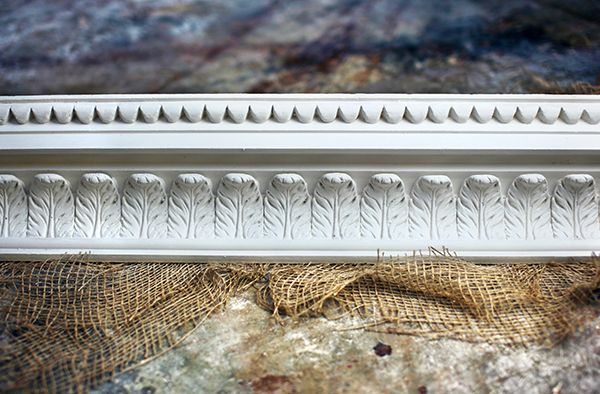Decorative mouldings—whether ceiling roses, cornices, dado rails, or wall panels—can add elegance, character, and period charm to a room. Bespoke options allow homeowners and designers to tailor these features to a specific vision or architectural style. But what happens when you’re working within a tight budget? The best part is that you can create an upscale appearance without spending a fortune.
In this blog, we’ll explore how you can get high-quality bespoke decorative mouldings without overspending, the types available, budget-friendly material alternatives, smart planning tips, and how to work with suppliers to get the most value.
What Are Bespoke Decorative Mouldings?
Bespoke mouldings refer to trims and embellishments crafted to suit a particular space, style, or design brief. Unlike off-the-shelf mouldings, bespoke options can match period details, accommodate unusual wall heights or ceiling curves, and integrate seamlessly into any room.
Common types include:
- Ceiling cornices and covings
- Dado and picture rails
- Wall panels and architraves
- Ceiling roses and column features
Each adds depth, symmetry, and a sense of refinement to a space, especially in traditional or heritage-style interiors.
Start with a Clear Design Goal
Before purchasing or requesting quotes, know precisely what you want. Do you want your living room to reflect Victorian elegance? Or are you aiming for a more subtle Georgian or contemporary feel?
A reference or photo can help reduce back-and-forth discussions and customisations, cutting time and cost.
- What period or design style am I aiming for?
- Which rooms or walls need mouldings?
- How thick and detailed do I want the mouldings to be?
Budget-Friendly Materials for Bespoke Mouldings
Traditionally, bespoke mouldings were made from solid plaster or hardwood, which are beautiful but expensive. Nowadays, cost-effective materials can replicate the appearance of luxury finishes while keeping expenses low.
Polyurethane and Polystyrene
These are lightweight, easy to install, and highly cost-effective. They replicate the appearance of ornate plaster but can be cut and fixed with adhesives. This makes them ideal for DIY projects or quicker professional installs.
MDF (Medium-Density Fibreboard)
Perfect for baseboards, skirtings, and dado rails, MDF offers a smooth finish at a much lower cost than hardwoods. It’s also easy to paint and shape.
Plaster Reinforced with Fibreglass
If you want authentic plaster but want to save some money, go for reinforced gypsum-based mouldings. They’re lighter and more flexible for installation, particularly for ceiling details.
DIY Installation vs. Hiring a Professional
Installation can be a big part of your moulding budget. If you’re handy with basic tools, you can install lightweight mouldings with adhesive, caulk, and patience.
For more detailed plasterwork or curved cornices, it’s advisable to hire a professional, but to reduce costs, you could:
- Handle the painting and finishing yourself
- Install simpler elements like dado rails and skirting boards
- Prepare the surfaces (cleaning, marking lines, cutting angles) before installation day
This collaboration model helps reduce labor costs while achieving a polished outcome.
Combine Mouldings with Paint Tricks
One of today’s most budget-smart trends is combining mouldings with bold paint to add character. For example:
- Paint the wall and the mouldings the same colour for a seamless, modern look
- Use contrasting shades to highlight panel shapes or ceiling coving
- Faux marbling or antique gold touches on basic mouldings can create a high-end feel
This technique allows basic materials to look far more bespoke.
Explore Reclaimed or Salvaged Mouldings
Another underrated option is reclaimed mouldings from renovation projects, salvage yards, or auction sites. These often come from historic buildings and offer intricate designs that would cost hundreds if recreated today. They might need light cleaning or trimming, but the character they add is priceless—and budget-friendly.
Ask About Off-Cuts or End-of-Line Pieces
Some moulding suppliers carry leftover pieces from previous jobs or discontinued profiles that they sell at discounted rates. These can be:
- Repurposed into frames, shelves, or accent pieces
- Used in smaller rooms or for wall detailing
- Combined with other off-cuts to create a custom feature wall
Just ask suppliers or visit showrooms with open stock—hidden gems are often found this way.
Final Thoughts:
Bespoke decorative mouldings and Plaster Cornice in London are not out of reach for those with limited budgets. With thoughtful planning, innovative material selections, and creative installation methods, it’s possible to create a premium look without exceeding your budget. Focus on where mouldings will make the most impact, work with smaller studios, and don’t underestimate the value of simple finishes and bold paint choices.
In today’s design world, style isn’t about spending more—it’s about making more intelligent choices. With these insights, your home can enjoy the charm of bespoke elegance without breaking the bank.







